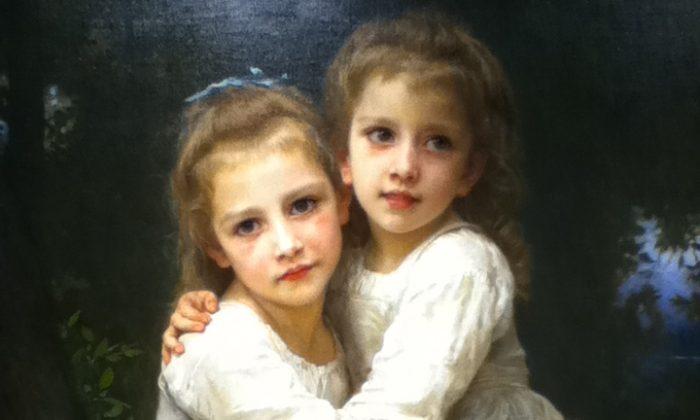A study published in Community Dentistry and Oral Epidemiology showed the effects of positive images on children. Researchers assigned children to look at either a neutral or a positive image of a dentist for two minutes before their regularly scheduled dental appointments.
The children who were exposed to the positive image of a dentist suffered far less anxiety about the dental visit than the ones who viewed the neutral image.
Study after study shows that images and environment play a very significant role in children’s development and their interaction with the world. Children surrounded by nature or by healthy, positive images of people and the world develop a calmer, more confident image of themselves and of life.
As the media goes to further extremes to capture our attention, there is very little restraint in terms of what is acceptable or responsible to people. The standards of what is acceptable have loosened to the point that there is very little restriction.
Art often goes beyond the norm to capture our attention. However, great storytelling and images of the spirit and of life beyond materialism were once used to capture people’s imaginations.
Exposure to images in daily life can affect a person’s self-image and how one interacts with the world. After viewing violent images all day, one may be more prone to respond aggressively or violently in a conflict. On the other hand, if positive images are viewed, a person may be more likely to resolve a conflict peacefully.
According to Stateuniversity.com, the American Academy of Pediatrics has shown that public educational television, without question, was the source of the most significant and long-lasting positive effects on children.
Children watch about five or more hours of television a day. If they start watching television when they are 5, by the time they are 18, they will have watched two and a half years of television. The effect this has on their development is profound. The images they see will form their world-view and how they interact with the world.
Children often think they are not affected by media, but they have few if any alternatives for comparison and have limited life experience with which to judge how they are affected.
A camp counselor for troubled youth told me he had seen violent kids completely change after they were taken on a camping trip for a few weeks. Their self-esteem, confidence, and composure completely changed. Some write back to him saying it was the best time of their lives.
The effects of positive and negative images that bombard us everyday determine our behavior in ways that we may not be aware of. Children and adolescents absorb the environment like a sponge. Using children’s environment to promote calmness and good self-esteem would benefit them remarkably.
The children who were exposed to the positive image of a dentist suffered far less anxiety about the dental visit than the ones who viewed the neutral image.
Study after study shows that images and environment play a very significant role in children’s development and their interaction with the world. Children surrounded by nature or by healthy, positive images of people and the world develop a calmer, more confident image of themselves and of life.
As the media goes to further extremes to capture our attention, there is very little restraint in terms of what is acceptable or responsible to people. The standards of what is acceptable have loosened to the point that there is very little restriction.
Art often goes beyond the norm to capture our attention. However, great storytelling and images of the spirit and of life beyond materialism were once used to capture people’s imaginations.
Exposure to images in daily life can affect a person’s self-image and how one interacts with the world. After viewing violent images all day, one may be more prone to respond aggressively or violently in a conflict. On the other hand, if positive images are viewed, a person may be more likely to resolve a conflict peacefully.
According to Stateuniversity.com, the American Academy of Pediatrics has shown that public educational television, without question, was the source of the most significant and long-lasting positive effects on children.
Children watch about five or more hours of television a day. If they start watching television when they are 5, by the time they are 18, they will have watched two and a half years of television. The effect this has on their development is profound. The images they see will form their world-view and how they interact with the world.
Children often think they are not affected by media, but they have few if any alternatives for comparison and have limited life experience with which to judge how they are affected.
A camp counselor for troubled youth told me he had seen violent kids completely change after they were taken on a camping trip for a few weeks. Their self-esteem, confidence, and composure completely changed. Some write back to him saying it was the best time of their lives.
The effects of positive and negative images that bombard us everyday determine our behavior in ways that we may not be aware of. Children and adolescents absorb the environment like a sponge. Using children’s environment to promote calmness and good self-esteem would benefit them remarkably.






